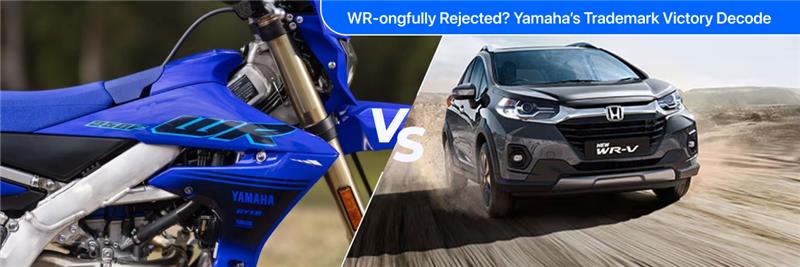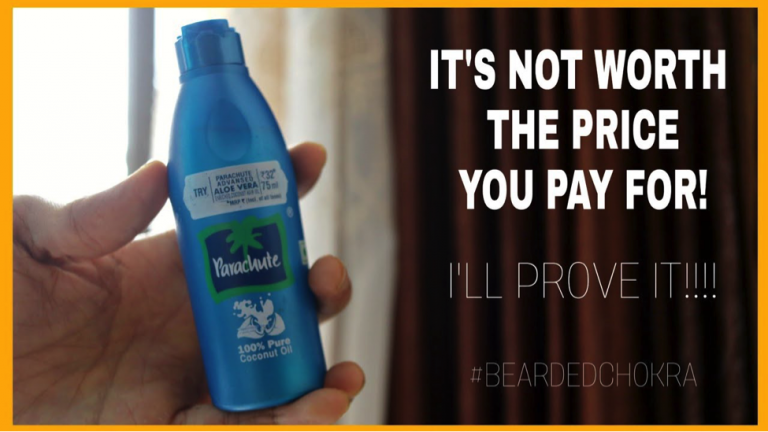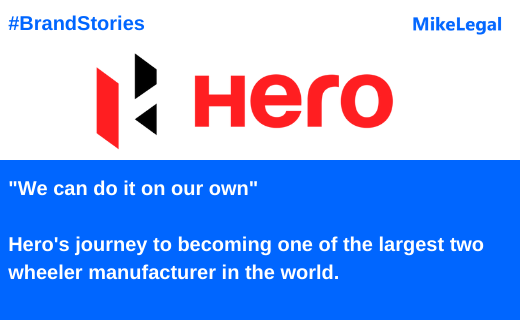WR-ongfully Rejected? Yamaha’s Trademark Victory Decoded
What’s in a name? For Yamaha, apparently a lot.
When the global motorcycle giant sought to register the trademark ‘WR’ in India, it expected a routine process, primarily because it rolled out the WR series in the 1990s for its off-road bikes. But also because the WR series bikes are sold in over 60 countries, and Yamaha has already received multiple international trademarks, and even a Red Dot Design Award to show for it.
But in India, the trademark hit a roadblock.
The Trademark Registry rejected the application because it saw Honda’s WR-V, a compact SUV, as a conflicting mark to Yamaha’s WR bikes. The authority didn’t share much explanation about what was behind the move.
Yamaga got just a one-liner reference: the usual “likelihood of confusion” rationale.
Naturally, Yamaha went ahead to challenge the rejection.
A Trademark Rejection Built on Thin Grounds
Yamaha approached the Bombay High Court and shared extensive evidence, including:
- Prior international registrations
- Longstanding use of ‘WR’ globally
- Recognition among biking communities
- Indian consumers’ familiarity with the WR brand
Yamaha argued that WR and WR-V are not the same, not phonetically, visually, or in trade channels. One is a two-wheeler; the other is a four-wheeler. Plus, Yamaha’s WR series predates Honda’s WR-V by nearly two decades.
So why did Yamaha got rejected?
Because, despite all the documentation, the Registrar responded with a vague and unreasoned order and cited only the potential for confusion.
No engagement with Yamaha’s evidence. No breakdown of comparative analysis. Just a default to Section 11 rejection, which was seen as a classic bureaucratic response.
What the Court Said
The Bombay High Court was unimpressed by the Registry’s lack of reasoning.
Justice Manish Pitale held that the Registrar failed to consider the material placed on record and did not explain why Yamaha’s arguments were dismissed. The order, according to the Court, was cryptic and legally inadequate.
But here’s where it gets really interesting.
Instead of simply remanding the matter back for reconsideration, the Court invoked a rarely used clause: the proviso to Section 20(1) of the Trademarks Act. This provision allows a trademark to be advertised before acceptance if the circumstances are exceptional.
Yamaha’s longstanding global use, international registrations, and the unjustified rejection by the Registry created exactly such an exceptional circumstance.
The Court set aside the rejection and directed that the ‘WR’ mark be advertised in the Trade Marks Journal. The ball now returns to the Registry’s court, but with the added pressure of public scrutiny and legal oversight.
What This Means for Trademark Owners
This case serves up some key takeaways for businesses, brand owners, and legal teams:
Two letters can spark a full-blown legal fight if someone else has a similar-sounding mark, even across industries.
Registry decisions are not always reasoned. You may need to push back with evidence and persistence.
Rare legal provisions like Section 20(1) proviso can come into play, especially in cases involving international goodwill and prior use.
India’s trademark system still lacks consistency in how it evaluates evidence and similarity, making clearance searches more important than ever.
How This Could’ve Been Avoided
While Yamaha had the resources to challenge the Registry, not every brand does. Most businesses would rather avoid litigation altogether, and that begins with a smart trademark clearance strategy.
This is where MikeTM Search comes in.
Before you file a mark, MikeTM Search scans trademarks in India and flags confusingly similar marks to generate instant risk scores and helps you avoid nasty surprises. Whether you’re a legal team, founder, or law firm, you get:
- 50% reduction in the time spent on TM search
- 30% improvement in the mandate turnaround time
- 20% increased availability of billable hours
- Simultaneously search for TM across all 45 classes
So yes, a name can be everything.
Avoid a WR-ong turn and run your trademark through MikeTM Search before the Registry does.
Final Thoughts
Yamaha’s case is a reminder that even global giants are not immune to procedural roadblocks in India’s trademark ecosystem. But it also shows that the law has room for fairness, if you know where to look.
Next time you pick a name, scan the trademark on MikeTM Search, make sure you’re not heading for a detour. A few minutes of smart checking could save you months of litigation.






